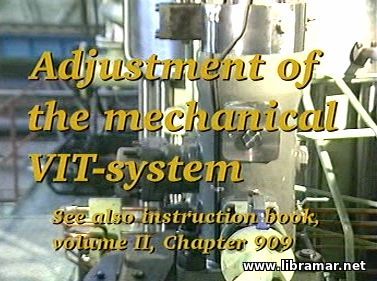Components of the Ship Ventilation System

Various components are included within the ductwork system for the transmission of air to and from the interior compartments of the ship.
Types of Fans
Axial flow fans are used widely because of compactness and high efficiency and are well adapted for ventilation of cargo spaces, machinery spaces, and other places where noise is not a significant consideration. Centrifugal fans are used for ventilation where quiet operation is desired and also for galleys, battery room exhaust, and areas where explosive vapors arc removed, where the motor is not to be located in the air stream. Propeller fans are used in  bulkhead installations and sometimes in a cowl for machinery space supply and exhaust systems where the pressure required is small.
bulkhead installations and sometimes in a cowl for machinery space supply and exhaust systems where the pressure required is small.
For maintenance, fans must be located for easy accessibility to the motors. Many motors are provided with two-speed controls to permit reduction in supply air during cold weather. Motors are selected for 40 °C ambient temperature except when located where high temperatures prevail, in which case they may be selected for 50 °C or 65 °C ambient temperatures. Axial and propeller fans generally are provided with waterproof or totally enclosed motors.
Weather-Terminal Openings
These include cowls, goosenecks, mushrooms, louvers and airlift boxes on deck or in bulkheads. All of these devices are fitted with wire mesh for rat-proofing. They are made either watertight or weathertight depending upon their location and on the space served. Weather terminals should be so located that exhaust air or stack gases do not contaminate supply air. On tank vessels, the supply terminals must be located outside the hazardous area as defined by the U.S. Coast Guard. Cowls  usually are provided with portable covers.
usually are provided with portable covers.
Interior Terminals
These would normally vary in type depending upon the application. High velocity directional terminals are used in galleys, pantries, laundries, machinery spaces, and similar heat-producing spaces where spot cooling is desired. Slotted outlets may be used in front of galley hoods and switchboards. Supply registers and ceiling or wall type diffusers are used for ventilated living spaces, with terminal velocities so as to provide diffusion and throw, without objectionable air movement and air noise in the space.
Care must be exercised to insure that moving parts of terminals are rugged and rattleproof. Terminals for holds and storerooms are merely open-ended ducts or a cut in the side of the duct fitted with wire-mesh screens for ratproofing.  High velocity ducts may require expanding cones to reduce the terminal loss.
High velocity ducts may require expanding cones to reduce the terminal loss.
Exhaust Terminals
They are located close to heat sources and are usually an open-ended duct covered with wire-mesh or with grilles where appearance is important. Exhaust-inlet velocities should be about 5-8 m/s in living spaces and up to about 10 m/s in other spaces. Guards made of round bars are usually fitted in way of terminals in cargo holds to prevent damage by cargo.
Air Filters
 Located in the inlet, they are a highly desirable item in supply ventilation systems. Viscous-coated metallic filters or manual roll renewable type air filters are satisfactory for marine use. Filters without the viscous-coating are also used in galley exhaust systems as grease filters and are cleaned easily by washing. Also, each filter is usually provided with a permanently installed air filter gage to indicate dirt loading. Filters apt to become laden with dirt and grease are potential fire hazards and should be accessible for regular cleaning.
Located in the inlet, they are a highly desirable item in supply ventilation systems. Viscous-coated metallic filters or manual roll renewable type air filters are satisfactory for marine use. Filters without the viscous-coating are also used in galley exhaust systems as grease filters and are cleaned easily by washing. Also, each filter is usually provided with a permanently installed air filter gage to indicate dirt loading. Filters apt to become laden with dirt and grease are potential fire hazards and should be accessible for regular cleaning.
Dampers
The dampers are sometimes used to control the volume of air delivered at terminals. They must be of rugged construction and rattleproof. Manually operated dampers must be provided on passenger ships at the weather opening in all ventilating systems to shut off the passage of air in the event of fire, except in exhaust ducts from film lockers and projection rooms. When ducts pass through main fire-zone bulkheads, automatic fire dampers are required, which will operate by melting a fusible link at 74 °C.
of air in the event of fire, except in exhaust ducts from film lockers and projection rooms. When ducts pass through main fire-zone bulkheads, automatic fire dampers are required, which will operate by melting a fusible link at 74 °C.
Automatic dampers are also required in exhaust ducts over potential sources of fire in galleys and are designed to operate by melting a fusible link. Dampers are designed to close against the anticipated draft in the duct. The U.S. Coast Guard requires also that all electrical ventilation systems be provided with remote control means for stopping the motors in case of fire or other emergency.
The "Read Later" function allows you to add material to this block with just one click. Just click on the icon and read the articles that interest you at any convenient time.


